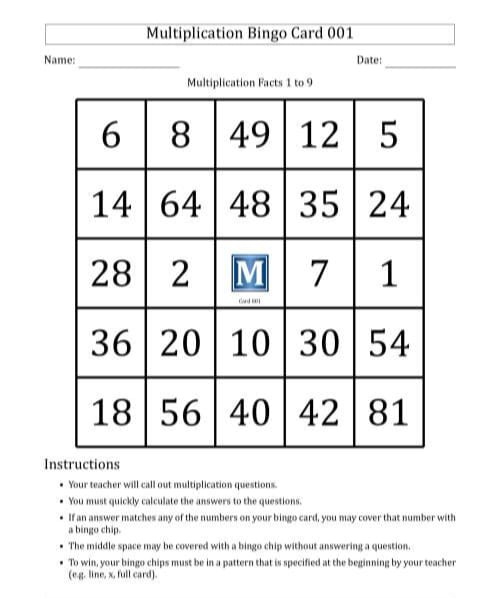Session 8: Introducing multiplication table
|
Session Title |
Introducing the multiplication table |
|
Objective |
Students will understand and memorize the multiplication tables through hands-on activities. |
|
Topic |
To understand the multiplication table |
|
Materials Required |
|
|
Methodology |
Learning through activity |
|
Session Duration |
90 Minutes |
Introduction Activity (15 minutes):
Introduction to the Multiplication Table
- Introduce the first few multiplication facts (e.g., 1 x 1, 1 x 2, 2 x 2, 3 x 3) using a chart or whiteboard.
- Demonstrate the concept using visual aids (objects, drawings, or hands-on materials). For example, showing 3 x 2 by grouping 3 sets of 2 objects.
Main Activity (60 minutes):
1. “Multiplication Bingo” Game (20 minutes)
Create Bingo cards with multiplication problems in each box. The teacher will call out products, and students must find the corresponding problem on their cards.
Rules of the Game
- Caller Calls a Question: The caller picks a multiplication problem randomly, like "7 × 7".
- Players Solve: All players quickly solve the multiplication (7 × 7 = 49).
- Players Mark Their Cards: If a player has 49 on their card, they place a chip on it (or cross it off).Winning the Game: A player wins if they mark 5 squares in a row horizontally, vertically, or diagonally. When a player or group thinks they have won, they shout "Bingo!"
2. “Dice Multiplication” Activity (15 minutes)
- Have students roll the dice to create multiplication problems. For example, a roll of 3 and 4 means they solve 3 x 4.
- Once a problem is rolled, the students solve it in pairs or small groups and present their answer.
3. “Multiplication Stations” (25 minutes)
Divide the class into 3-4 groups. Each group rotates between different stations that focus on different aspects of multiplication.
- Station 1: Visual Aid Station- Students use counters or small objects to model multiplication problems.
- Station 2: Flashcard Challenge- Flashcards with multiplication problems are presented. Students work in pairs to quiz each other.
- Station 3: Multiplication Table Race- Students race to fill out a multiplication chart correctly. The first group to complete it wins.
Review Question (10 minutes):
- Review what was learned during the lesson. Highlight the key multiplication facts and any strategies students found helpful.
Follow-up Tasks (5 minutes):
-
9×8
-
7×9
-
6×6
Expected Learning Outcome:
Knowledge building:
- To understand one one-digit multiplication table.
Skill Building:
- Confidence
- Teamwork
- Self regulations
Resources: Multiplication Table


No Comments